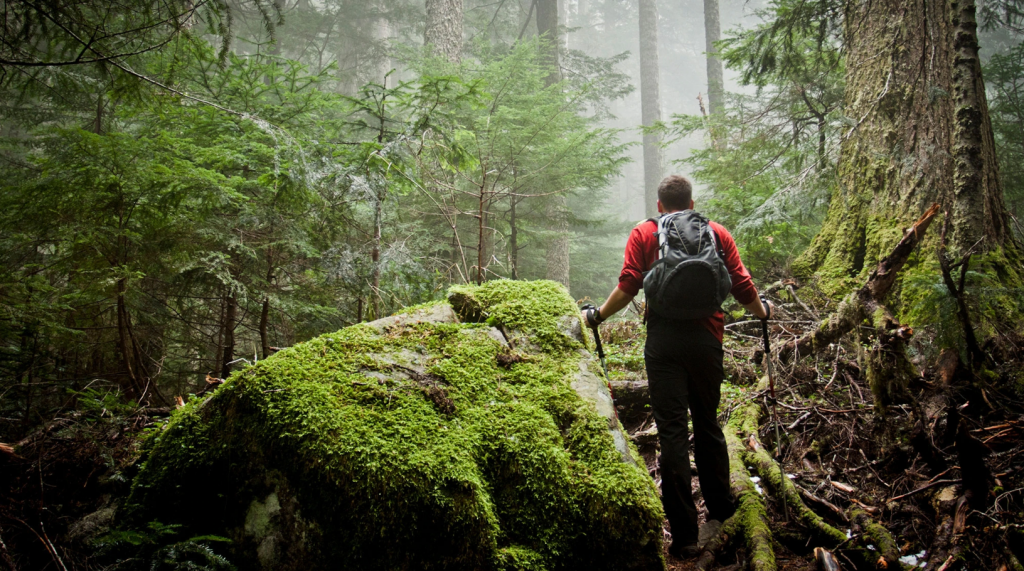When talking about survival, it all comes down to “do or die”; however, the most crucial thing in this type of occurrence is to stay calm and collected and approach it objectively. Here we will be sharing some crucial skills on how to survive in the woods without supplies.

How to Survive in the Woods Without Supplies
The three most important basic concepts include building a shelter, making fire, and finding food and water. Building a shelter can be challenging, but you’ll only need long wood and a lot of grass, leaves, pine needles, and whatever possible to cover the shelter.
In terms of making fire, the flint and steel are pretty simple, and all you need to do is stroke the rock against a piece of right steel until sparks start flying. When you become thirsty, it is preferable to drink water from plants. Most importantly, only eat foods you are familiar with, like wild berries, lettuce, and onions.
Build a simple shelter
The first thing you want to do is build a shelter. The easiest method is constructing a leaf hut. Look for an object like a stump, rising ground, a fork of a tree, a log, or a large rock to support the sturdy ridgepole or the other end of the ground.
Gather grass, fern, pine needles, green-bought, and whatever is possible to find to cover the shelter’s skeleton. Pile the material on the sides to keep you warm and dry in temperatures below zero. Finally, lay more sticks and poles over the shelter to keep the walls safe, especially when a high wind blows.
Gather branches and lay them against the sides of this triangle so they will lean against the ridgepole. Leave a gap towards the shelter’s high end for your doorway. The door facing the east will catch the morning sunlight for warmth, and the wind will typically strike the back of your shelter.
Make fire
Finding tinder is most important. Look for dry wood, and if you find yourself in a highly wet and rainy area, look for harder woods like cherry or ash. Evergreens like pine, hemlock, and spruce can be helpful as they burn hot and fast.
There are three ways to start a fire without matches: fire by friction, a magnifying glass, and flint and steel.
Friction technique
Indians have used this method for centuries, and it’s straightforward. You’ll need a bow with a string long enough to loop around a dry stick that will serve as a drill. Also, you’ll need to carve a socket to hold the drill against a hollow in the fireboard.
When you start moving the bow back and forth and rotating the drill in the fireboard, the friction will cause sparks that can blow into a flame when they get caught on the tinder and start a fire.
Magnifying glass
This technique includes convex lenses found in cameras, eyeglasses, binoculars, and even broken bottles. This method works in full sunlight when you hold the lens, so the light will fall directly on the tinder.
Flint and steel
What you’ll need in this case is a piece of flint rock and steel. By stroking the rock against a piece of right steel until you see sparks flying off. When they land on the dry tinder, they will ignite easily.
Find drinkable water
The most important rule on how to survive in the woods without supplies is to look for water. Most people know it’s best not to try your chances and go without water longer than 24 hours, especially in a hot and arid climate.
In the world we live in today, we cannot say that there is a surface where you can find a hundred percent clean and uncontaminated water, so there is a good chance it will be contaminated.
There are four ways to obtain clean water in the wild: from natural catches, from plants, from collecting moisture, and by constructing a solar drill.
Water from natural catches
This is potentially the most dangerous way to obtain water. A natural catch is any landscape feature that holds or channels water, like rivers, lakes, ponds, and streams, which would be preferable as they are the safest option regarding natural catches.
However, the water collected from any of these sources should be purified first by straining it through a clean sand, sloth, or non-poisonous glass filter and then boiled for at least five minutes.
Also, look for lowland catches by tracing the presence of underground water like rock and a lot of green growth.
Water from plants
Plants are a preferable option as a “quick relief” in need of emergency water, as they usually don’t have enough water to serve as a complete water source. In the early spring, look for hardwood trees like walnut, birch, hickory, maple, and sycamore.
You want to bore about ¼ or ½ holes into the trunk using a knife or a sharp rock to collect the thin sap in a cup or a vessel. Don’t drink too much, as it might cause you an upset stomach.
Constructing a solar drill
What you’ll need for this device is a 5×5 sheet of clear milky plastic, a 6-inch piece of plastic tubing, and a container.
First, dig a pit in the ground about four feet across and three feet deep, preferably in a damp area, gully, or river basin, to increase the still’s productivity.
Position the tube to lay with one end in the cup so the rest of the line can run up and out of the sides of the pit.
Next, secure the pit’s edges by laying a plastic sheet, forming a cone with 45 degrees angled sides. Place a stone in the center of the plastic, covering no more than three inches above the container.
Find food
The truth is there are thousands of edible foods in the wilderness; however, without extensive knowledge of which are edible varieties, it isn’t safe to experiment with them. If possible, eat only the plants you are aware of that are safe and if necessary.
Plants for food
Some food options that are safe to eat are blackberries, wild strawberries, gooseberries, miner’s lettuce, wild onions, and mushrooms (only if there is no doubt that they are not poisonous, mistakes are deadly).
Animals for food
The best time of the day to hunt for animals is early in the morning or at dusk, and the hunting grounds include along shores of ponds, forest margins, natural meadows, streams and lakes, and protected mountain slopes.
However, most warm-blooded animals are hard to catch and require some unique skill, and killing them for food is very hard to contemplate, even though certain times can be proven necessary.
Either way, if you don’t like this idea, you can eat insects high in fat, like hairless caterpillars, grasshoppers, wood-boring beetle larvae and pupae, ant eggs, and termites. Keep in mind that these insects need to be cooked until completely dried.
